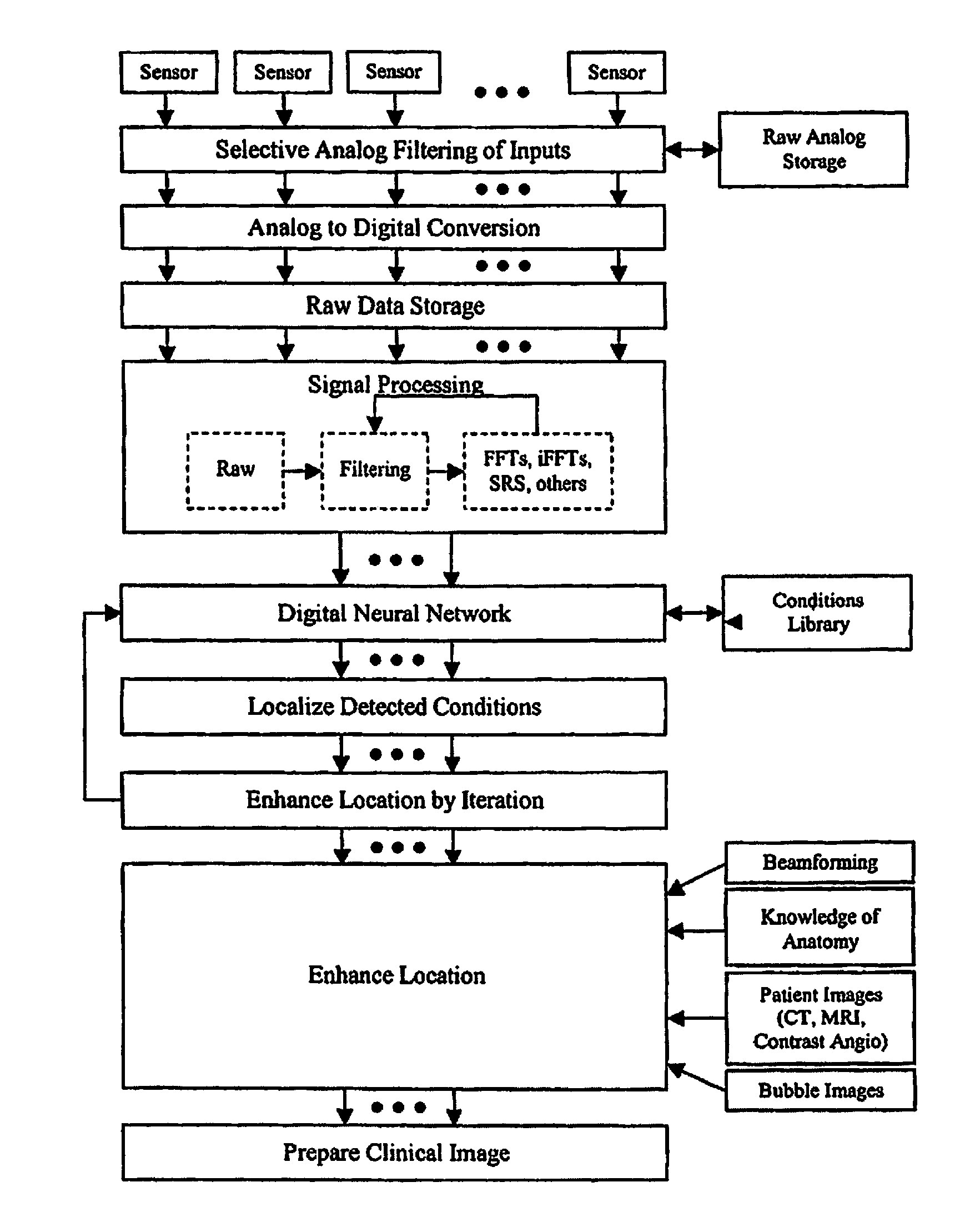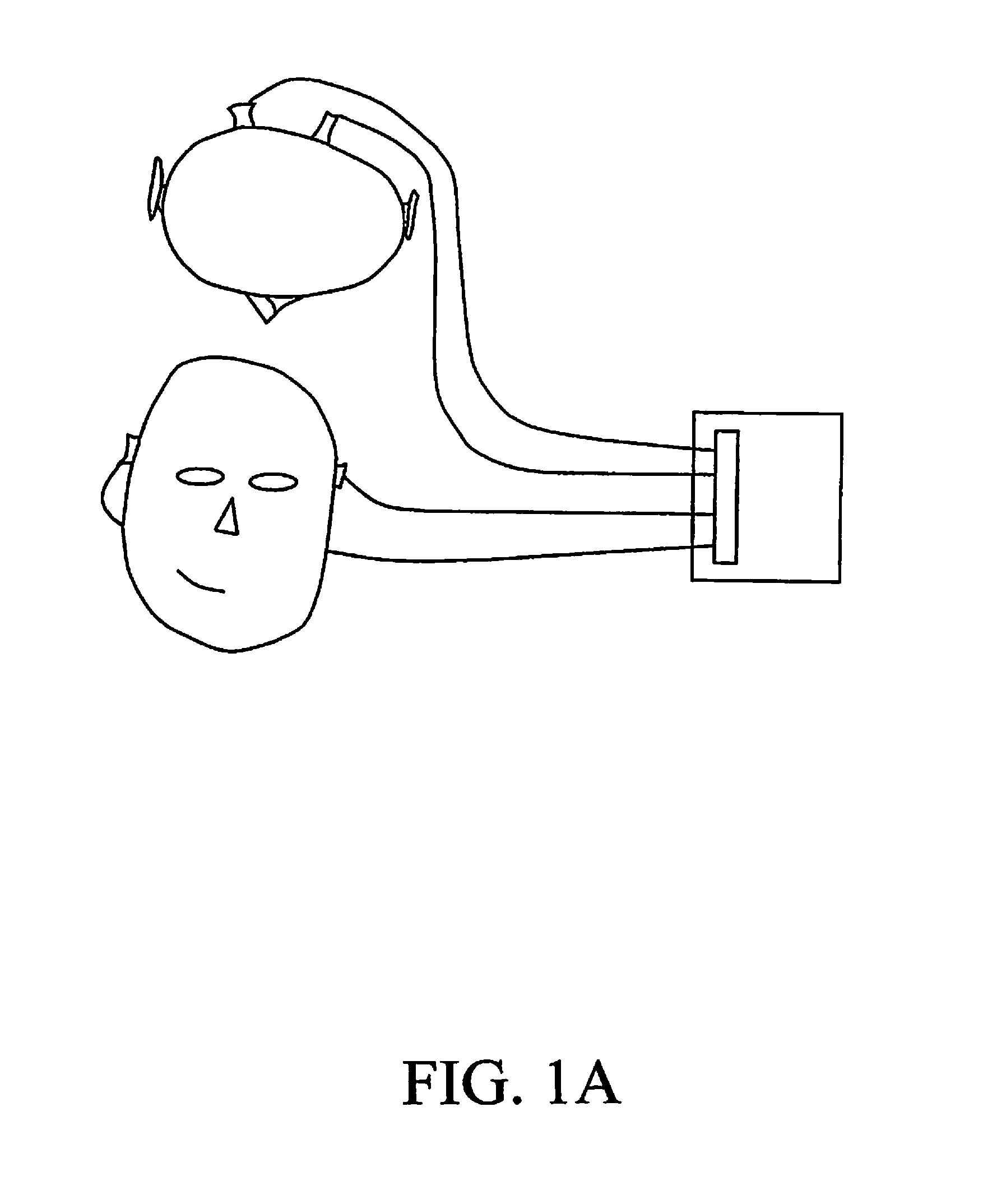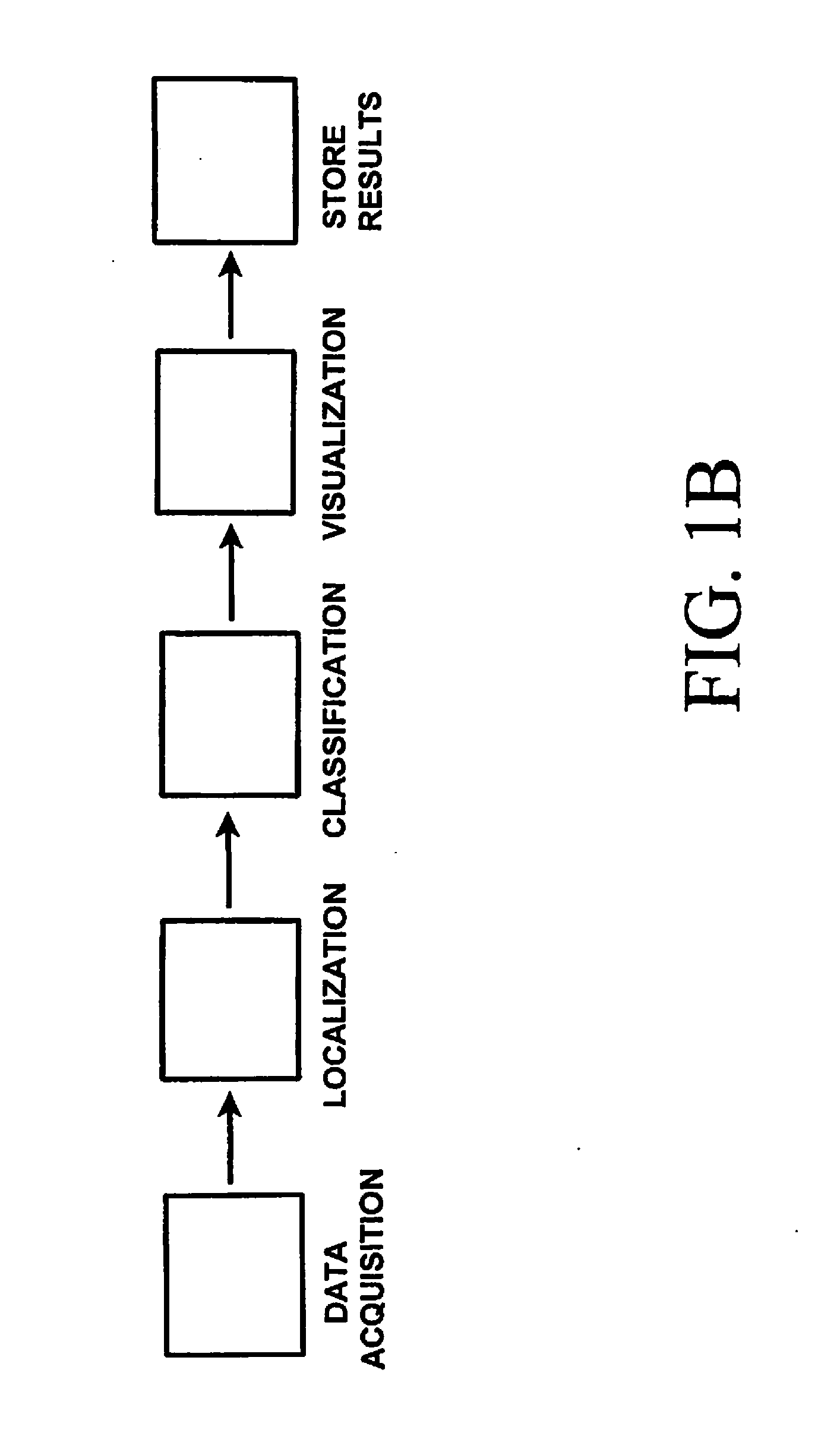Noninvasive Detection of Human Brain Conditions and Anomalies
a technology of human brain and anomalies, applied in the field of noninvasive detection of human brain conditions and anomalies, can solve the problems of affecting the normal functioning of the brain, so as to achieve the effect of reducing the risk of stroke, preventing the onset of stroke, and improving the neurological defici
- Summary
- Abstract
- Description
- Claims
- Application Information
AI Technical Summary
Benefits of technology
Problems solved by technology
Method used
Image
Examples
Embodiment Construction
[0061]General Outline of Process
[0062]Periodic pulses from the heart produce waves of expanding blood vessels within the body. The tissue surrounding the blood vessels is displaced during the pulse and contracts again after the pulse. This displacement propagates outward from the blood vessel. In the case of the brain, this displacement reaches the skull and displaces the bone in response the displacement of the blood vessel wall. Extremely sensitive accelerometers record this displacement. The character of the signal recorded by the accelerometers is dependent on the nature of the displacement caused by the blood pulse. At a restriction in the vessel the displacement before the restriction is larger than it would be without the restriction and the displacement beyond the restriction is less. The spatial distribution of displacement produces a different signature than that recorded by an unrestricted vessel. Likewise an aneurysm allows a circulation of blood within the bulb of the a...
PUM
 Login to View More
Login to View More Abstract
Description
Claims
Application Information
 Login to View More
Login to View More - R&D
- Intellectual Property
- Life Sciences
- Materials
- Tech Scout
- Unparalleled Data Quality
- Higher Quality Content
- 60% Fewer Hallucinations
Browse by: Latest US Patents, China's latest patents, Technical Efficacy Thesaurus, Application Domain, Technology Topic, Popular Technical Reports.
© 2025 PatSnap. All rights reserved.Legal|Privacy policy|Modern Slavery Act Transparency Statement|Sitemap|About US| Contact US: help@patsnap.com



